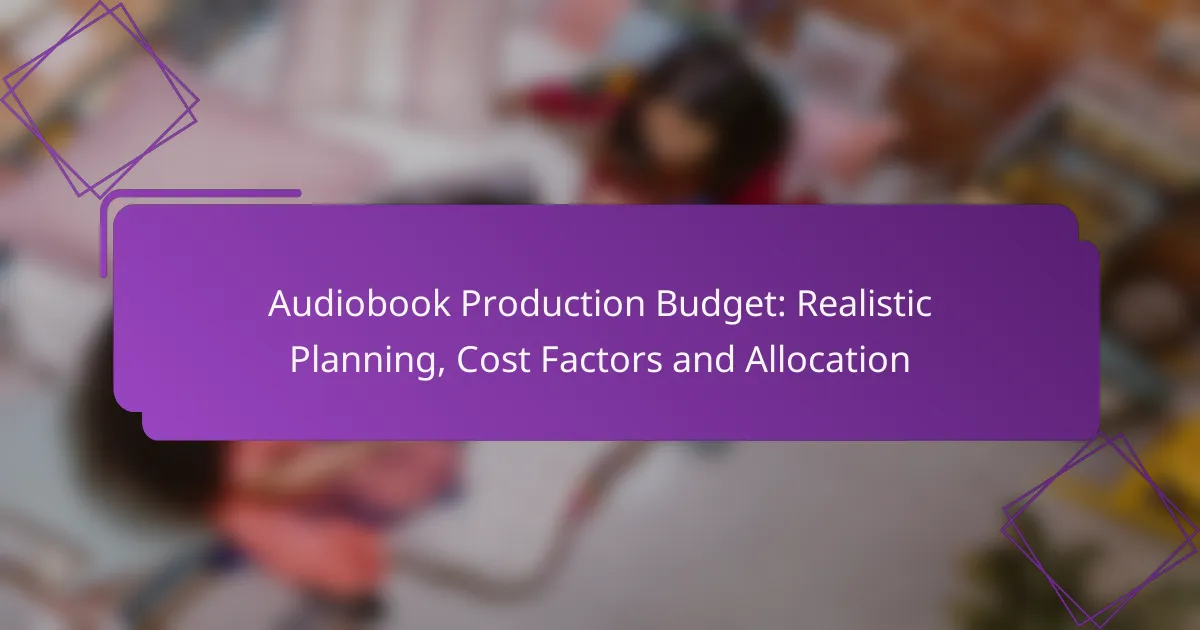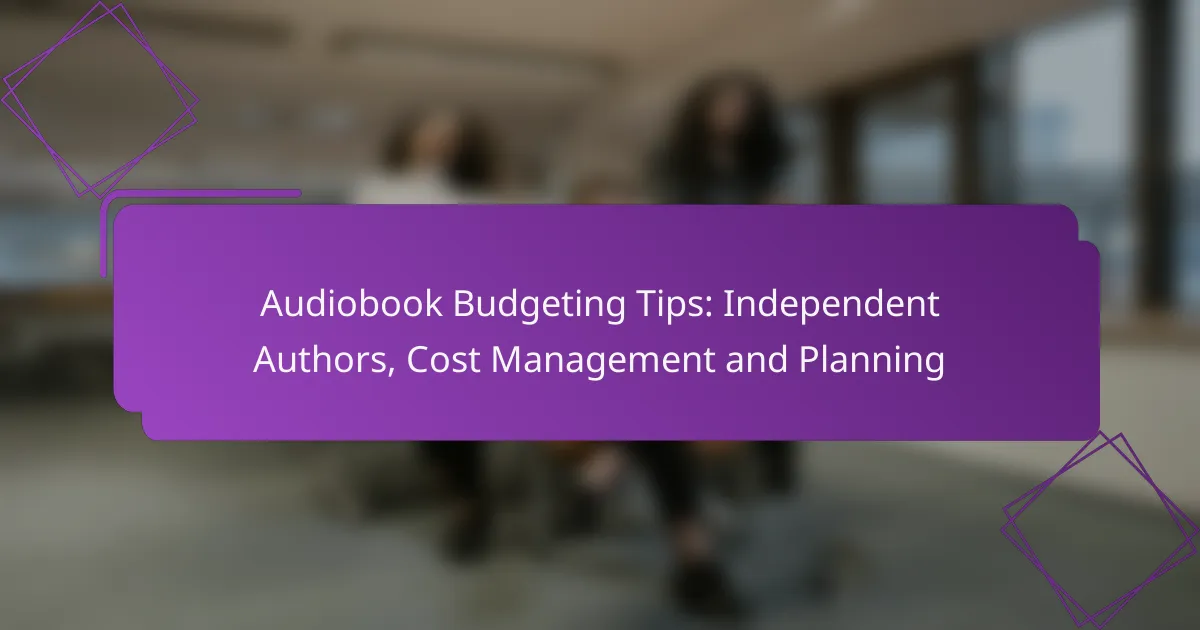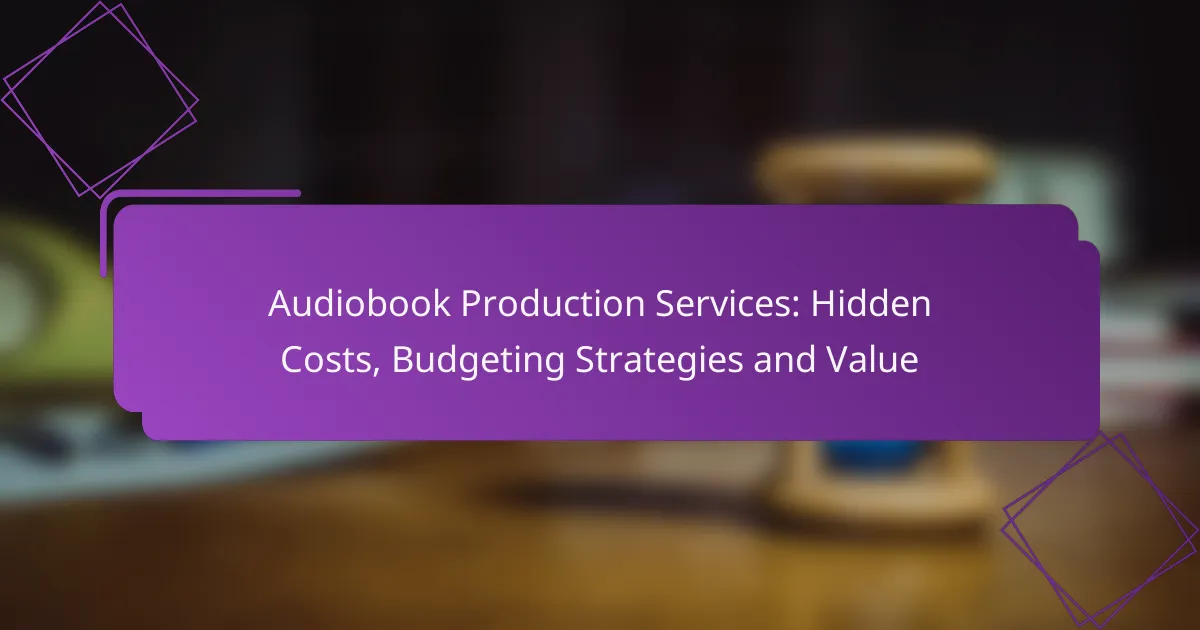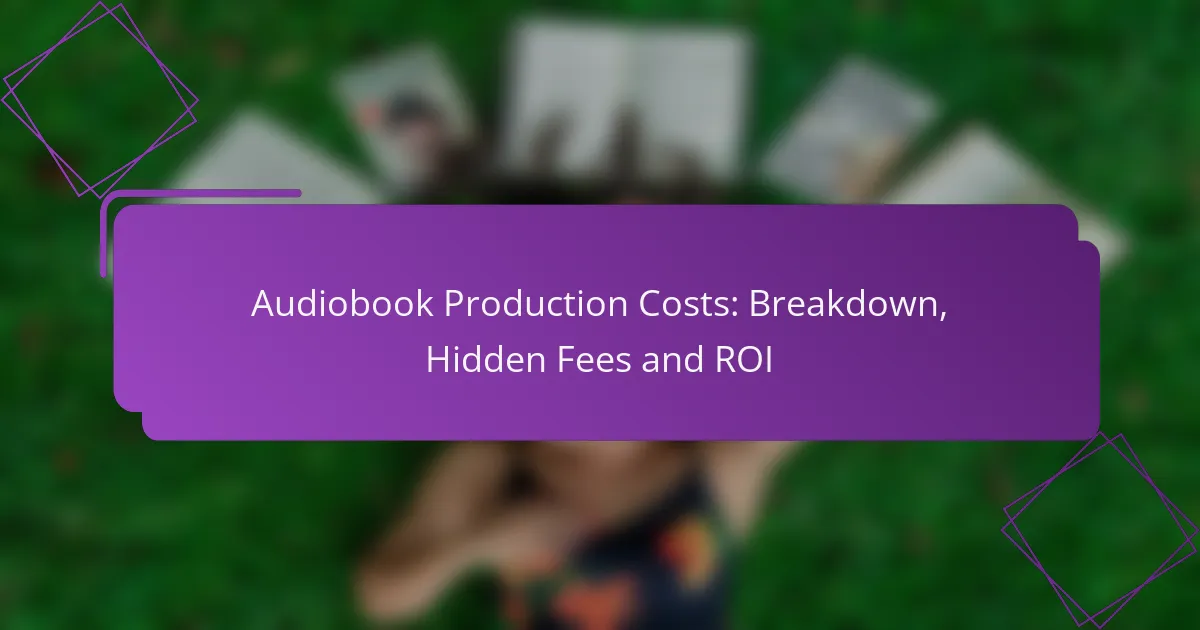Creating an audiobook production budget is essential for outlining the project’s scope and ensuring financial stability while maintaining quality standards. Key cost factors such as voice talent fees, studio rental, and editing expenses must be understood for realistic planning. Proper allocation of funds across pre-production, recording, and post-production phases is crucial for a successful outcome.

How to create an audiobook production budget?
Creating an audiobook production budget involves outlining the project’s scope, estimating costs, and effectively allocating resources. A well-planned budget helps ensure that the production stays on track financially while meeting quality standards.
Define project scope
Defining the project scope is crucial for setting a realistic audiobook production budget. This includes determining the length of the audiobook, the number of narrators, and any additional elements like sound effects or music. Clearly outlining these factors helps in estimating costs accurately.
Consider the target audience and genre as well, as these can influence the production style and requirements. For instance, a children’s audiobook may require more engaging narration and sound effects compared to a non-fiction title.
Estimate production costs
Estimating production costs involves calculating expenses related to recording, editing, and mastering the audiobook. Typical costs can range from a few hundred to several thousand dollars, depending on factors like studio rental, narrator fees, and post-production work.
Break down the costs into categories such as pre-production (script preparation), production (recording), and post-production (editing and mastering). This helps identify where most of the budget will be allocated and allows for adjustments if needed.
Allocate resources effectively
Effective resource allocation is key to staying within budget while achieving quality results. Assign specific budget amounts to each category identified in the cost estimation phase, ensuring that essential elements like professional narration and quality audio equipment are prioritized.
Regularly review the budget throughout the production process to track spending and make necessary adjustments. Avoid common pitfalls such as underestimating costs or overlooking hidden expenses like distribution fees or marketing costs.

What are the key cost factors in audiobook production?
The primary cost factors in audiobook production include voice talent fees, studio rental costs, and editing and post-production expenses. Understanding these elements is crucial for realistic budgeting and effective allocation of resources.
Voice talent fees
Voice talent fees can vary significantly based on the narrator’s experience and the project’s scope. Rates typically range from $100 to $400 per finished hour, depending on the narrator’s reputation and the complexity of the material.
When selecting voice talent, consider not just the cost but also the narrator’s style and suitability for your content. A well-matched voice can enhance listener engagement and potentially lead to better sales.
Studio rental costs
Studio rental costs are another major expense in audiobook production, often ranging from $50 to $150 per hour. Prices can fluctuate based on location, equipment quality, and the studio’s reputation.
To manage studio costs effectively, consider booking longer sessions to minimize setup time or exploring home studio options if you have access to quality recording equipment. This can significantly reduce overall expenses.
Editing and post-production expenses
Editing and post-production expenses can account for a substantial portion of the budget, typically ranging from $50 to $200 per finished hour. This phase includes sound editing, mixing, and mastering to ensure high audio quality.
Investing in professional editing is essential, as poor audio quality can detract from the listener’s experience. Evaluate potential editors based on their previous work and client reviews to ensure you receive quality service without overspending.

How to allocate budget for different production phases?
Allocating a budget for audiobook production involves dividing funds across key phases: pre-production planning, recording, and post-production and marketing. Each phase has distinct cost factors that should be carefully considered to ensure a successful project.
Pre-production planning
Pre-production planning is crucial for setting the foundation of your audiobook. This phase typically includes script preparation, casting, and scheduling, which can account for around 10-20% of the total budget. Investing time in this stage can prevent costly adjustments later on.
Key considerations include selecting the right narrator and ensuring the script is polished. Consider hiring a professional editor or consultant to refine the material, which can enhance the overall quality of the final product.
Recording phase
The recording phase is where the bulk of your budget will likely be spent, often comprising 50-70% of the total costs. This includes studio rental, equipment, and the narrator’s fees. Depending on the experience of the narrator and the studio’s reputation, costs can vary significantly.
When budgeting for recording, factor in the length of the audiobook and the number of recording sessions needed. A typical recording session can last several hours, and it’s wise to plan for potential retakes to ensure quality.
Post-production and marketing
Post-production and marketing can take up 20-30% of your budget. This phase includes editing, sound design, and mastering, which are essential for delivering a polished final product. Additionally, allocating funds for marketing efforts is vital to reach your target audience effectively.
Consider using social media, email campaigns, and audiobook platforms for promotion. A well-executed marketing strategy can significantly boost sales, so ensure you have a clear plan and budget for these activities.

What are the common mistakes in budgeting for audiobooks?
Common mistakes in budgeting for audiobooks include underestimating costs associated with voice talent, neglecting marketing expenses, and ignoring distribution fees. These oversights can lead to unexpected financial strain and impact the overall success of the audiobook project.
Underestimating voice talent costs
Voice talent is often the most significant expense in audiobook production, and underestimating these costs can derail your budget. Rates for professional narrators can vary widely, typically ranging from $100 to $500 per finished hour, depending on their experience and the project’s complexity.
When budgeting, consider not only the narrator’s fee but also potential costs for auditions, studio time, and post-production editing. It’s wise to allocate a buffer of 10-20% above initial estimates to accommodate unexpected expenses.
Neglecting marketing expenses
Marketing is essential for the success of your audiobook, yet many producers overlook these costs. Effective marketing strategies can range from social media promotions to paid advertising, with budgets often starting at a few hundred dollars and scaling up based on your goals.
To avoid pitfalls, create a marketing plan early in the budgeting process. Allocate at least 10-15% of your total budget to marketing efforts, ensuring you have the resources to reach your target audience effectively.
Ignoring distribution fees
Distribution fees can significantly impact your overall budget, yet they are frequently ignored. Many platforms charge a percentage of sales, typically between 20-30%, or may have upfront fees for listing your audiobook.
When planning your budget, research various distribution options and their associated costs. Consider using a mix of platforms to maximize reach while keeping an eye on fees, ensuring you maintain a healthy profit margin on sales.
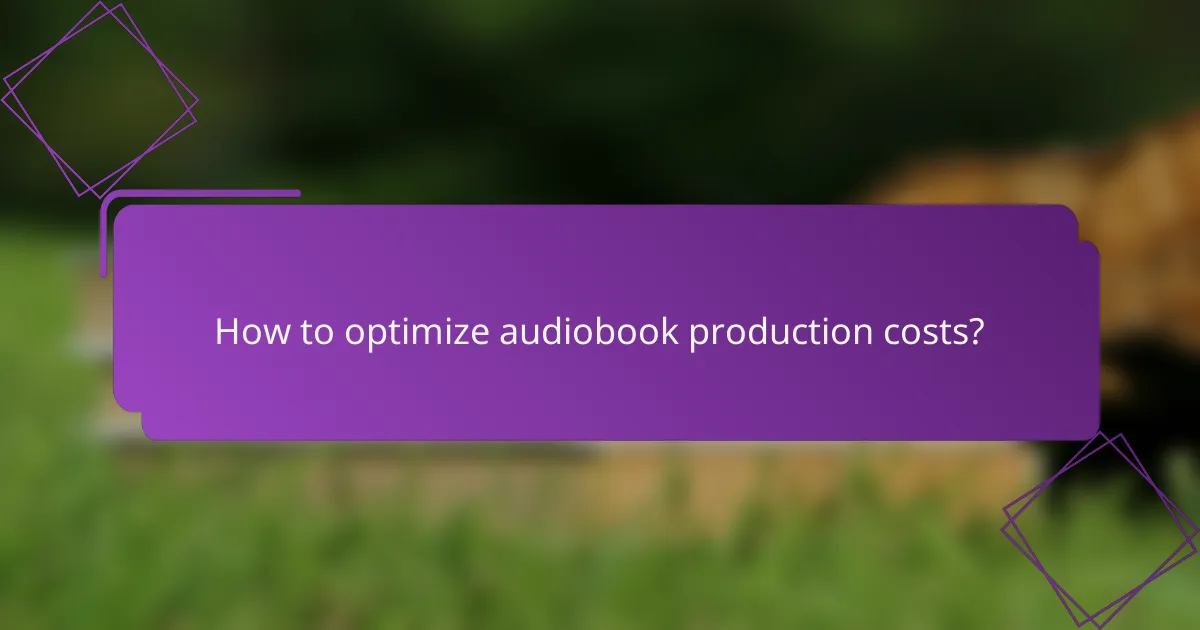
How to optimize audiobook production costs?
To optimize audiobook production costs, focus on strategic planning and resource allocation. By leveraging freelance talent and investing in quality equipment, you can significantly reduce expenses while maintaining high production standards.
Utilize freelance platforms
Freelance platforms like Upwork and Fiverr offer access to a wide range of professionals at various price points. This flexibility allows you to find narrators, editors, and sound engineers who fit your budget and project requirements.
When using these platforms, carefully review profiles and ratings to ensure quality. Consider setting a budget range for each role, typically between $20 to $100 per hour, depending on experience and expertise.
Invest in quality equipment
Investing in quality recording equipment can lead to better sound quality and reduce the need for extensive post-production work. A decent microphone, audio interface, and soundproofing materials can cost between $300 to $1,000, depending on your needs.
Prioritize equipment that meets industry standards, such as USB microphones with a frequency response of 20Hz to 20kHz. This investment can save money in the long run by minimizing editing time and improving the overall listening experience.
